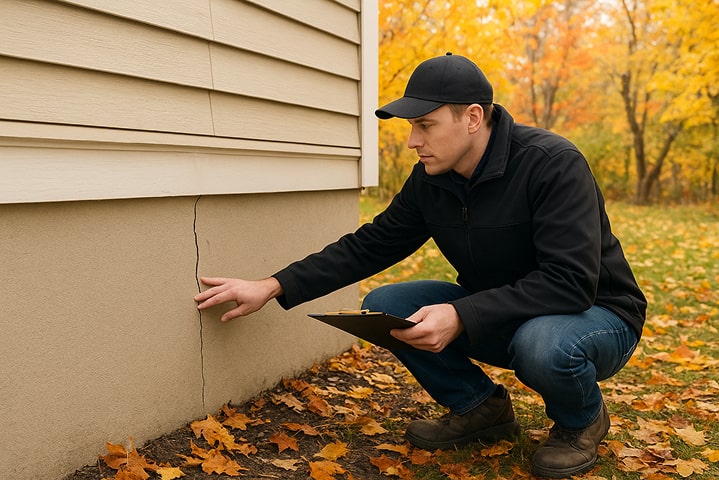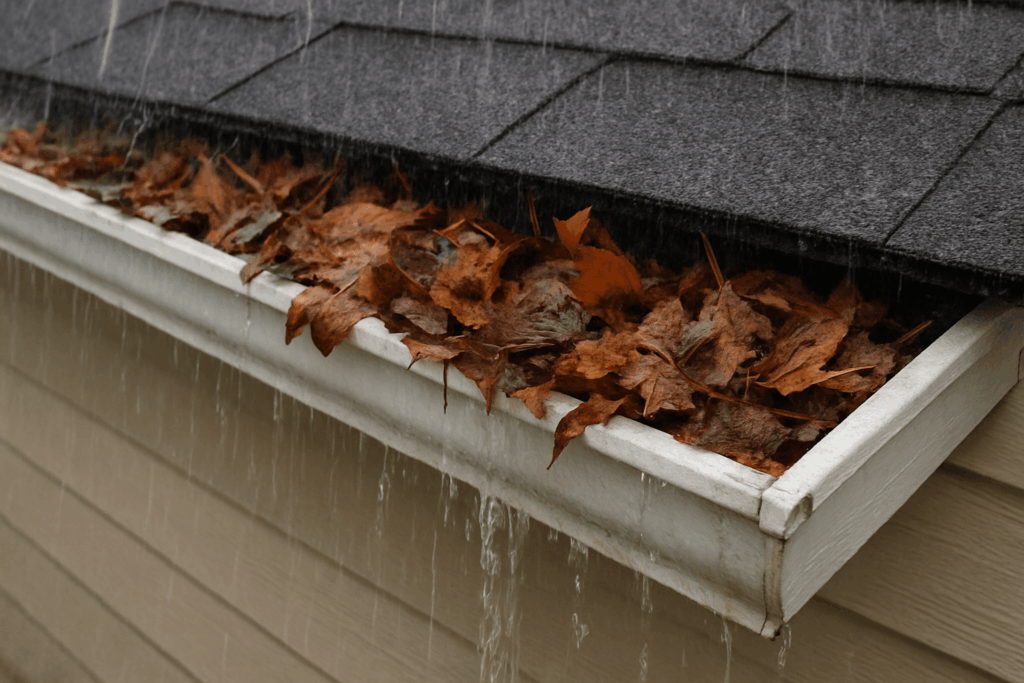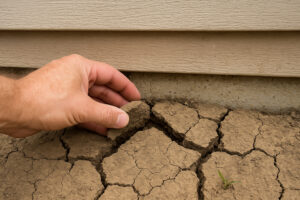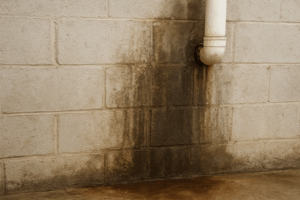When it comes to older homes, settlement is often considered to be “normal.” We’ve all become accustomed to seeing small cracks or living with doors and windows that stick occasionally. But “normal” doesn’t always mean acceptable. Cracks appearing in your home can be a sign of foundation movement, and that could indicate something more serious developing beneath the surface.
Understanding “Normal” Settlement vs. Foundation Movement
Every home in Edmonton settles a little bit over time. The soil underneath compresses, and minor, hairline cracks can form as a result. This is part of the natural life cycle of a house
and usually isn’t cause for concern. But when cracks keep growing, floors start to slope, or doors and windows suddenly stop fitting the way they used to, those are signs of uneven foundation movement. At that point, your home isn’t just settling, it’s shifting. Left unchecked, that movement can stress other parts of the structure, leading to further cracking and potential water intrusion.
Why Foundation Problems Are Common in Edmonton
Edmonton’s soil and climate create a perfect storm for foundation issues. Much of the city is built on expansive clay soil, which swells dramatically when it absorbs water and
contracts when it dries out. That constant push and pull exerts pressure on your home’s foundation.
In spring, melting snow and rainfall can saturate the ground and cause the soil to expand.
As fall arrives and the weather cools, the same soil dries and shrinks, leaving small voids around the foundation. Over time, these cycles of expansion and contraction can cause the
foundation to settle unevenly or even crack.
Many older Edmonton homes lack modern drainage or waterproofing, making foundation repair a common necessity.
Why Fall Is the Best Time to Check Your Foundation
Autumn is one of the best times to give your home’s foundation a careful look. The soil has gone through both wet and dry conditions, and seasonal temperature changes reveal movement patterns that might not be noticeable at other times of year.
As you prepare your home for winter, take a few minutes to look for these warning signs:
- Cracks in basement walls or floors – especially horizontal or stair-step cracks.
- Doors and windows that stick or suddenly stop closing properly.
- Uneven or sloping floors that feel different from one room to the next.
- Gaps between walls and ceilings or baseboards pulling away.
- Puddles or soft spots forming near your foundation after rain.
If any of these sound familiar, it doesn’t mean you’re facing an emergency, but it does mean it’s time to get a professional foundation inspection before winter sets in.
Why It May Be Risky to “Wait Until Spring”
It’s tempting to wait until spring to deal with foundation cracks, but that delay can sometimes make the problem worse. Edmonton’s winters are hard on concrete.
When moisture gets into small cracks and freezes, it expands, widening the damage each time temperatures drop and rise again. That means a hairline crack in October can become a much larger issue by April.
By getting ahead of it now, before the deep freeze, you can prevent that cycle from causing further damage and ensure your foundation is stable heading into winter.
What to Expect During a Foundation Assessment
A professional foundation assessment is straightforward and informative. A technician will:
- Inspect the inside and outside of your home.
- Look for patterns of cracking or displacement.
- Measure floor levels and check for moisture issues.
From there, they’ll explain what’s happening and recommend the right next steps, whether that’s a simple crack repair, waterproofing, or structural stabilization using proven foundation repair systems.

The goal isn’t just to simply fix a symptom, it’s to understand the cause and develop a plan to protect your home’s long-term stability.
Simple Preventative Steps for Edmonton Homeowners
Foundation care doesn’t have to be complicated. A few simple habits can make a significant difference:
- Keep gutters and downspouts clear and direct water at least six feet from the
foundation. - Make sure yard grading slopes away from the home.
- Avoid overwatering near the house during dry months.
- Check foundation walls every fall and spring for changes.

These small steps can help reduce soil movement and moisture pressure, the two biggest causes of foundation trouble in our region.
The Bottom Line: Reassurance Starts with Awareness
Cracks and sticking doors don’t always mean disaster, but they do warrant attention. Your home is one of your most important investments and understanding what’s happening beneath it brings real peace of mind.
If you’ve noticed new cracks or uneven settling this fall, consider booking a professional foundation inspection with Shield Foundation Repair. A quick assessment from one of our technicians can tell you whether what you’re seeing is harmless, or something that needs
attention before winter.
The simple fact is “normal” doesn’t always mean safe, and catching foundation issues early is the best way to keep your home strong, dry, and comfortable for years to come. If you have any questions or concerns, give us a call today to speak to our friendly staff at 780 760 4900 or fill out our handy contact form




